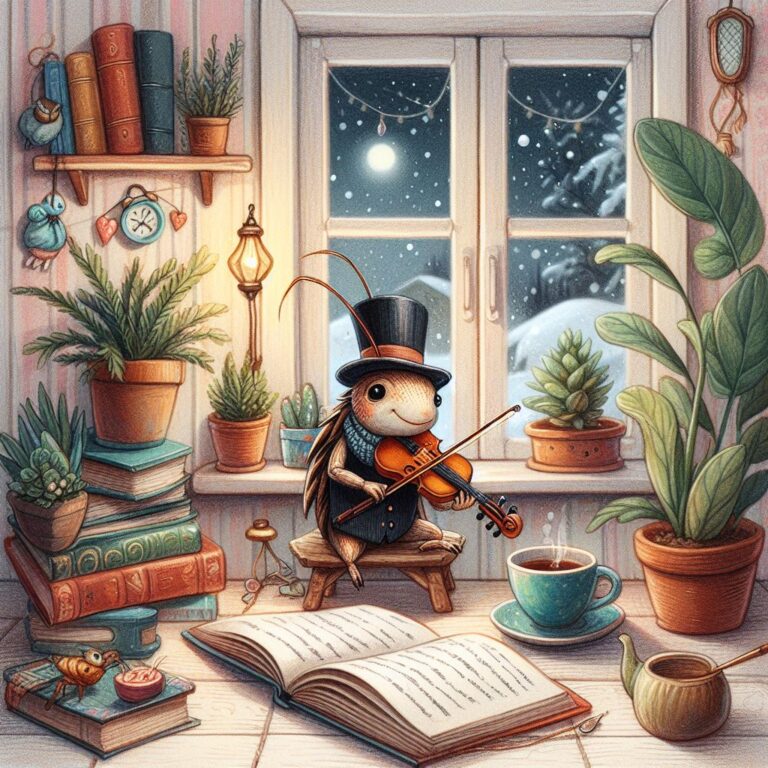Winter Symbolism & Meaning – Nature and Folklore Intertwined
As you watch the landscape transform with the arrival of winter, the deeper symbolic meanings and cultural traditions tied to this season may spark your curiosity. Beyond the tangible evidence of shorter days and frigid nights, what does winter truly represent in nature’s grand cycle and across various belief systems?
Here’s a quick interpretation:
Winter’s symbolic meanings derive from nature’s dormancy and cultural traditions worldwide, evoking themes of darkness and light, demise and renewal, stillness and preparation, struggle and resilience reflected through sacred seasonal celebrations and folklore. These profound meanings remind us of life’s continuum through summer and winter, loss and return mirrored in nature annually.

Nature’s Season of Rest
For you, bundling up may mark winter’s advent as the thermometer plunges. Yet nature responds through a season of rest, renewal, and rebirth preceded by what may seem like decay.
- Deciduous trees shed the vivid, vibrant leaves that defined autumn, leaving behind stark skeletons amid evergreen pines.
- Birds and butterflies that animated summer skies migrate to warmer climates.
- The songs of spring frogs and crickets fade into quietude.
But while parts of nature sleep, the seeds and resources needed for reawakening grow. Roots embed deeper within the nurturing earth. Bulbs and pods swell with nascent life.
So before rebirth, a season of reflection, conservation, maturation, and preparation transforms the environment. Nature doesn’t end in winter but slows, rests, and gathers strength for a vibrant awakening. The visual decay gives no indication of imminent renewal brimming under the surface calm.
Just as day softens into night before the renewing dawn, winter symbolizes a phase in nature’s continuum. Seasons ebb, flow, and transform in an eternal cycle that inspires awe.
Key Symbols Emerging in Winter
Certain repeating images and concepts emerge as quintessential representatives of the winter landscape. These symbols also unveil insightful connections to the very soul of the season.
| Symbol | Meaning |
|---|---|
| Snowflakes | Each snowflake’s unique geometry symbolizes individuality amid unity with all snow formations. The pristine crystals represent purity floating earthward. |
| Evergreen trees and pine cones | Evergreens retain verdant needles all winter, promising life persists amid the barren, dormant woodlands. Pine cones hold the hope of new beginnings as future forests in their resinous cones. |
| Winter solstice | The year’s longest night gives way to a gradual return of sunlight, representing the theme of renewal after darkness and struggle. |
| Bonfires and candles | Defiant flames reflecting humanity’s quest for survival glow in the winter darkness. Their light, warmth, and gathering power provide comfort during long, frigid nights. |
| Berries and nuts | Winter fruits and nuts offer symbols of nature’s provisions and gifts of delicious abundance to be gratefully gathered and stored for the winter ahead. |
| Holly and mistletoe | Retaining vivid green leaves and scarlet berries through winter’s chills, these plants symbolize tenacity, vitality, fertility and holiday cheer. |
| Poinsettias | Originating in winter blooms of Mexico, the red-leaved poinsettia has become an emblem of festive decoration during holiday seasons. |
| Snowmen | Whimsical snowmen imply childlike joy, playfulness and creativity deriving beauty from winter’s barren landscapes. |
These powerful symbols speak to purity floating from frozen heavens, resilience flourishing amid devastation, shifts from darkness to light, determination to sustain warmth and camaraderie despite the elements, acknowledging provisions from nature’s bounty, perseverance blooming despite adversity, celebration treasured during the year’s bleakest season, and retaining youthful spirit and creativity when prospects seem dim.
Cultural Traditions and Mythology
Beyond nature-based symbolism, winter’s cultural folklore across civilizations offers enlightening glimpses into the human experience of this arresting season. Community traditions, mystical figures, epic tales, and spiritual festivities render deep meaning onto the frosted landscape.
Ancient Legends and Lore
Imagine the thrill of ancient Nordic clans huddled around bonfires during winter solstice ceremonies offering burnt offerings to their mighty god Thor. Perhaps they hoped to gain Thor’s protective blessings and fertile soil by springtime. The charred Yule log ashes scattered in fields may have carried those wishes through snowy months when the world slept under ice and stars.
Or picture Italian children gazing up at an elderly woman swooping down upon her broomstick through the winter sky. La Befana brings small gifts or lumps of coal to reward children’s virtues or naughty deeds in classic lore.
Age-old winter mythology also plunges into the shadowy realm of the oshiroi babaa in Japanese folktales. These ghostlike women drifting down snowy peaks offer mystical hot drinks to lost travelers, warming body and spirit.
Such cross-cultural winter legends capture symbolic visions of light piercing darkness, hope keeping despair at bay, fanciful flights of imagination transforming the mundane, and strangers connecting through magical meetings on snowy pathways winding into enchanted forests of legend.
Spiritual Celebrations
Beyond folklore, spiritual winter celebrations also resonate with profound meaning for millions across the globe. These festivals align seasonal symbols with sacred narratives and timeless Truth at the core of varied faiths.
Christmas commemorates the baby Jesus Christ’s humble birth when God became human to redeem the world in Christian belief. Evergreen Christmas trees adorned with stars, snowy landscapes recalling the nativity’s chilly stable, exchanges of gifts representing those offered by the three wise men, and spreading good cheer through carols all reinforce this vibrant story two millennia on.
The Jewish holiday of Hanukkah celebrates the rededication of the defiled temple in Jerusalem after the mighty Maccabees overthrew their Greek-Assyrian oppressors. Lighting an oil lamp that miraculously burned for eight days when only one existed defines Hanukkah. Illuminating the darkness reflects the eternal radiance God offers wandering hearts.
For Hindus, Buddhists, Sikhs, and others celebrating Diwali, rows of glowing clay lamps symbolically represent the inner light proving more powerful than any darkness. Evil and ignorance flee from such unwavering light shared generation after generation during late autumn festivals marking varied historical events. The lamps shining in unison also represent solidarity and hope flourishing as the days grow shorter and colder in nature’s cycles.
Yalda in Persian lore welcomes the return of light and longer days after the winter solstice. So amid the frost and snow, families gather to burn candles, read poetry extolling past heroes and the eternal themes of light and dark, good and evil…and share a feast of summer fruits clinging to vines through winter’s fury. The last pomegranates and fig enjoy their final glory amid songs, laughter, embracing loved ones near a glowing hearth.
Common Themes
Stepping back, unity shines through the kaleidoscopic variety of winter legends and celebrations. Light, darkness, death, rebirth, reflections on mortality and eternity recur across time, location, and traditions linked to this arresting season. Such symbolic threads bind all humanity in a common quest for meaning, purpose, and transcendence in our fleeting earthly lives nested within nature’s rhythms.
So as you watch delicate snowflakes drift behind your window pane or decorate a fir tree for upcoming holidays, consider the interwoven natural, cultural, and spiritual dimensions that color winter’s unfolding scenes with marvelous richness across the world.
Reflection for Further Growth
Beyond revealing cyclical shifts governing nature and sparking vital cultural traditions, the winter season also pivots our attention inwards. What truths, latent quests, or clarified priorities might emerge from winter’s silent snowfalls within your inner landscape this year?
The external quiet, separation, loss, discomfort, and even grief characterizing winter can usher in reflection, wisdom, preparation, decisiveness, and deeper meaning like nature germinating powerful seeds under frozen ground.
While you may reflexively brace against shorter days and bitter chill this year, consider welcoming winter’s spiritual invitations. These include:
- Reflection – Honestly evaluating choices, experiences from the past year without judgement to integrate lessons
- Discernment – Tuning into your authentic needs and values to guide major decisions
- Preparation – Fortifying your reserves be they financial, relational, spiritual
- Connection – Seeking community and meaning to withstand adversity
- Reorientation – Realigning priorities for optimal growth and purpose
When spring’s renewal blooms in nature and culture, may you too emerge revitalized, refocused, and empowered from winter’s passage after heeding these transformational calls.
FAQ
1. Why do many cultures have winter solstice celebrations?
Many cultures traditionally celebrated the winter solstice because it marked the longest night and shortest day of the year. Ancient people viewed the sun as a life-giving force, and the winter solstice signified the return of longer days and the sun’s strengthening power. Celebrations like Yule, Saturnalia, and Dien Day represented hope for spring’s renewal.
2. How did evergreen trees become associated with winter celebrations?
Evergreen trees remaining lush and green throughout winter came to represent perseverance, renewal, and eternal life in many cultures. Decorating these resilient trees brought symbols of hope and life into homes during the winter season. Evergreen boughs also reminded people that plants still lived through winter’s deathlike sleep.
3. What common themes unite winter symbols and traditions?
Light and darkness, endings and renewal, struggle and survival are some of the most common themes underpinning winter symbolism and traditions worldwide. These symbols speak to the profound quest for meaning and rebirth in human experience aligned with nature’s cycles of dormancy and awakening during winter.
4. How can I tap into winter’s transformational power personally?
Introspection, reassessment of life priorities, strengthening meaningful relationships, focusing energies on personal growth, and realigning values to live authentically are all deeply personal ways to harness winter’s transformative power for inner renewal.
5. Which winter festivals involve lighting candles or lanterns?
Lighting candles, oil lamps, or lanterns is central to many winter festivals’ symbolism including Hanukkah, Diwali, Kwanzaa, Santa Lucia Day, St. Martin’s Day, and the Winter Solstice. These flames reflect defiance against winter darkness, the triumph of good over evil, and the lasting hope these holidays represent.






